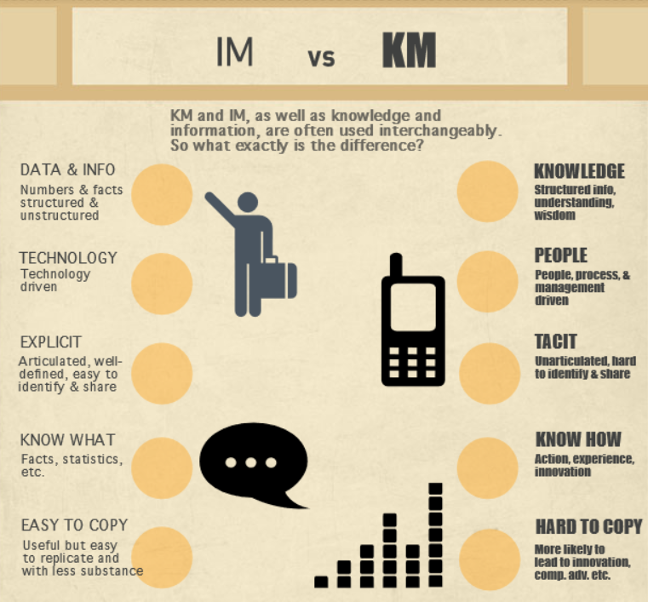I’m not a strict knowledge manager or a technology-focused architect, but I cover a large range of subjects. The above image popped into my feed from the Cohenization blog as just a snippet. Clicking on the link direct to the Knowledge Management Tools website gives a little more context.
After thinking about this graphic for a while I came to a simple oversimplification about what it was trying to say – an oversimplification that really exemplifies my thinking about IT strategy: Are you implementing a tool for mechanical use or are you trying to solve a problem? Information/Data management are meant to provide tools to store/find digits, but knowledge management is about SO MUCH MORE.
In my case, again: deploy a tool or solve a problem?
In the past year I’ve worked on two projects that very easily sit on different sides of the equation. On the one hand, I managed a technology pilot, evaluating a series of Windows 8 tablets for use as laptop replacements and workplace supplements. It was a great experience, and while were were testing devices as solutions to known problems, we were, at that moment, attempting to deploy technology and receive feedback on that deployment. On the other hand I was asked to go into a client and identify possible scenarios for cost savings while increasing efficiencies.
Both of these projects were focused on technology, but one looked at the people and their processes, while the other simply looked at the technology. Or did it? See, this is where I think IT departments get stuck: there is no technology-only solution, there is ALWAYS a business driver. Budget changes. Workforce churn. Employee burn out. Mission changes. IT is meant to provide technology solutions, but it is imperative (and not simply so I can continue to have a job) that we consider the intangible side: the people, the processes, the organization, the methods; however you want to call it: the non-technology.
Let me reiterate: without considering how things are done, what the mission is, what stakeholders want or are willing to do – without these things technology WILL FAIL US. It will miss the mark. It will be aimed at the wrong problem, or heaven forbid no problem altogether!
Now more than ever iterative technology deployments are the best way to be successful: gather feedback/requirements, evaluate, build, test, deploy, start again. Short sprints; quick turn around; and simple, targeted solutions. Don’t be a data collection department, be a problem solving one.
Image Source: www.knowledge-management-tools.net



